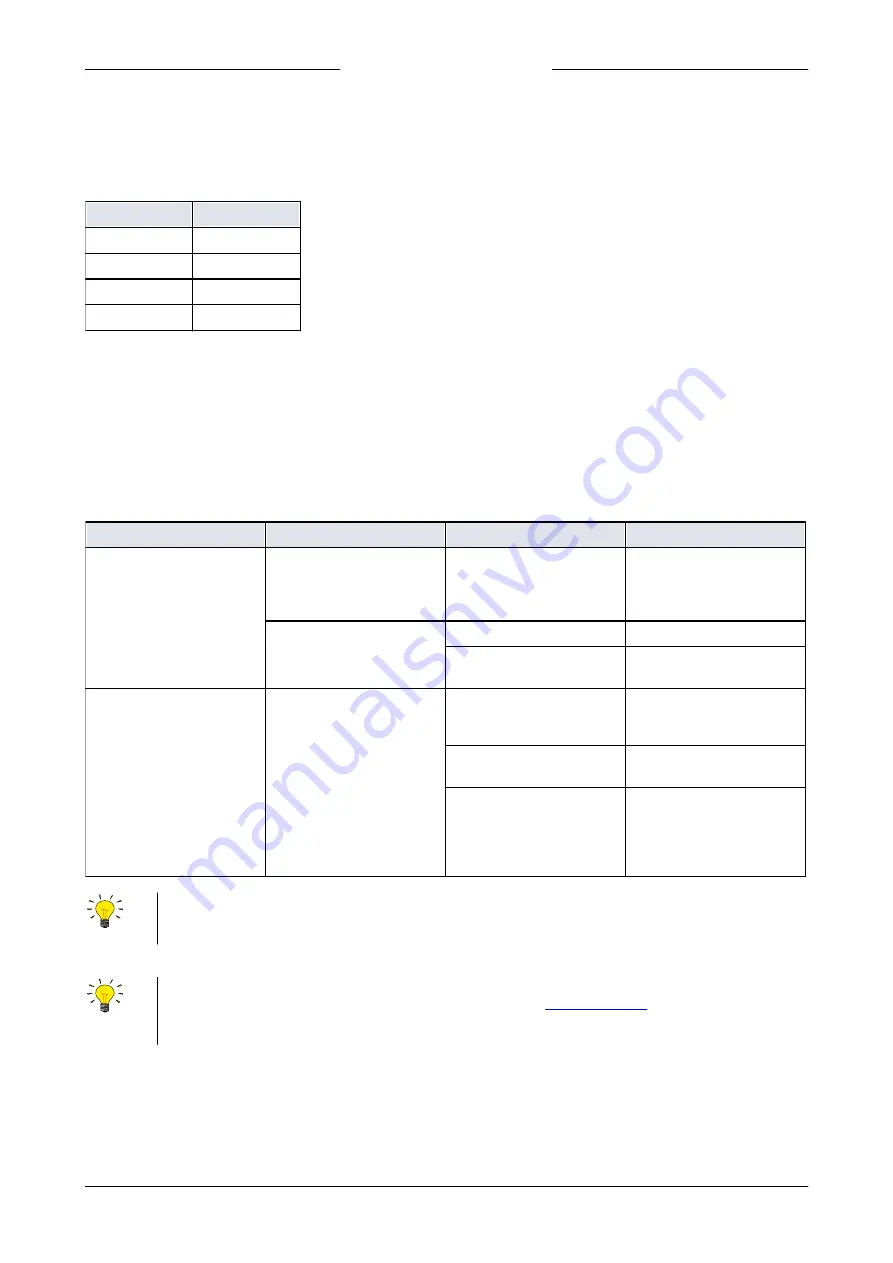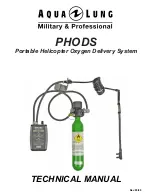
Bronkhorst®
Instruction Manual EL-FLOW® Select
9.17.099J
29
DeviceNet™
On DeviceNet™ instruments, the MSD switch provides a smaller range (0-6) and a 'P' option. With this option, the node
address is set according to the digital parameters (instead of by setting both switches to 0).
DeviceNet™ instruments have a third switch, for setting the baud rate:
Data rate
Baud rate
1
125000 (default)
2
250000
5
500000
P
Programmable
With the 'P' option, the baud rate is set by the according digital parameter
EtherCAT®
Bronkhorst® instruments with an EtherCAT® interface have 3 rotary switches, with which the
EtherCAT® Second Address
can be
set in the range of 0 – 4095 (0xFFF). This value is copied to the
Configured Station Alias
register (address 0x0012:0x0013) at
instrument start-up.
3.6
Communication
The following table lists the supported communication modes of the EL-FLOW® Select:
Connection
Type
Communication standard
Fieldbus/protocol
9-pin D-sub
Analog
0…5Vdc
0…10Vdc
0…20mA
4…20mA
n/a
Digital
RS232
ProPar
RS485
FLOW-BUS
Modbus ASCII/RTU
Fieldbus specific
Digital
RS485
FLOW-BUS
Modbus ASCII/RTU
PROFIBUS DP
Can
CANopen
DeviceNet™
Ethernet
EtherCAT®
Ethernet/IP
Modbus TCP/IP
POWERLINK
PROFINET
The communication standards (analog and digital) and fieldbus interface (if applicable) are specified at ordering time, i.e.:
·
In analog mode, the instrument is set to the specified voltage/current range
·
The dedicated fieldbus connection only provides the specified fieldbus interface
Simultaneous analog and digital operation
·
The instrument can be monitored and operated through the analog and a digital interface simultaneously, but it only
accepts a setpoint from one of both (this is called the control mode; see
·
In analog mode, the analog input and output signals are translated to the digital setpoint and measure parameter
respectively.
















































